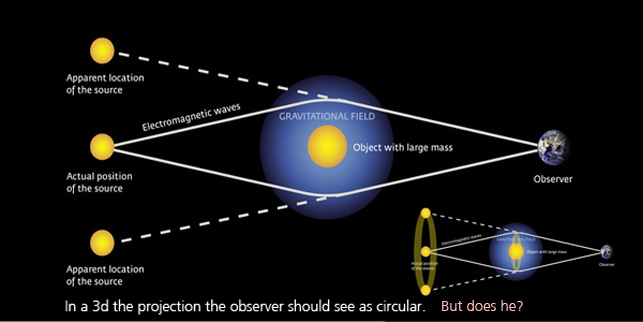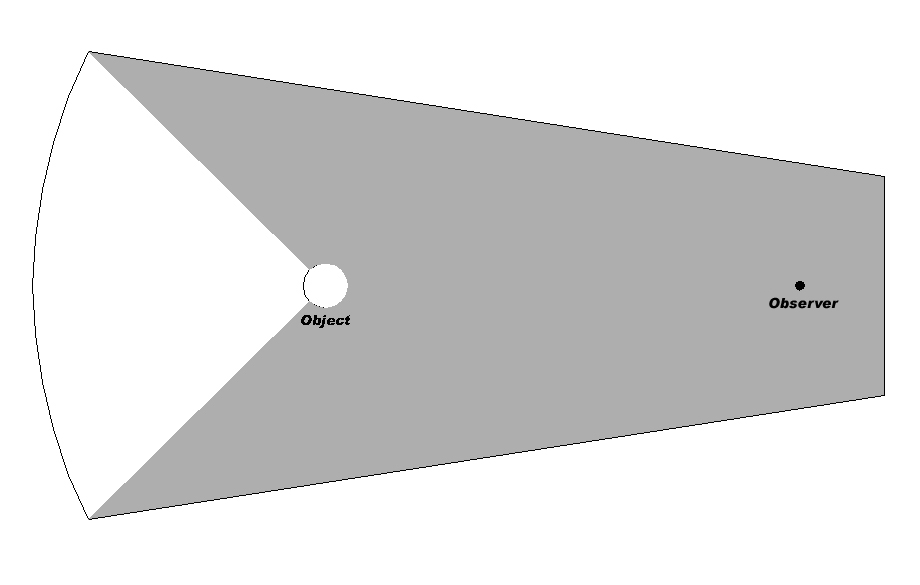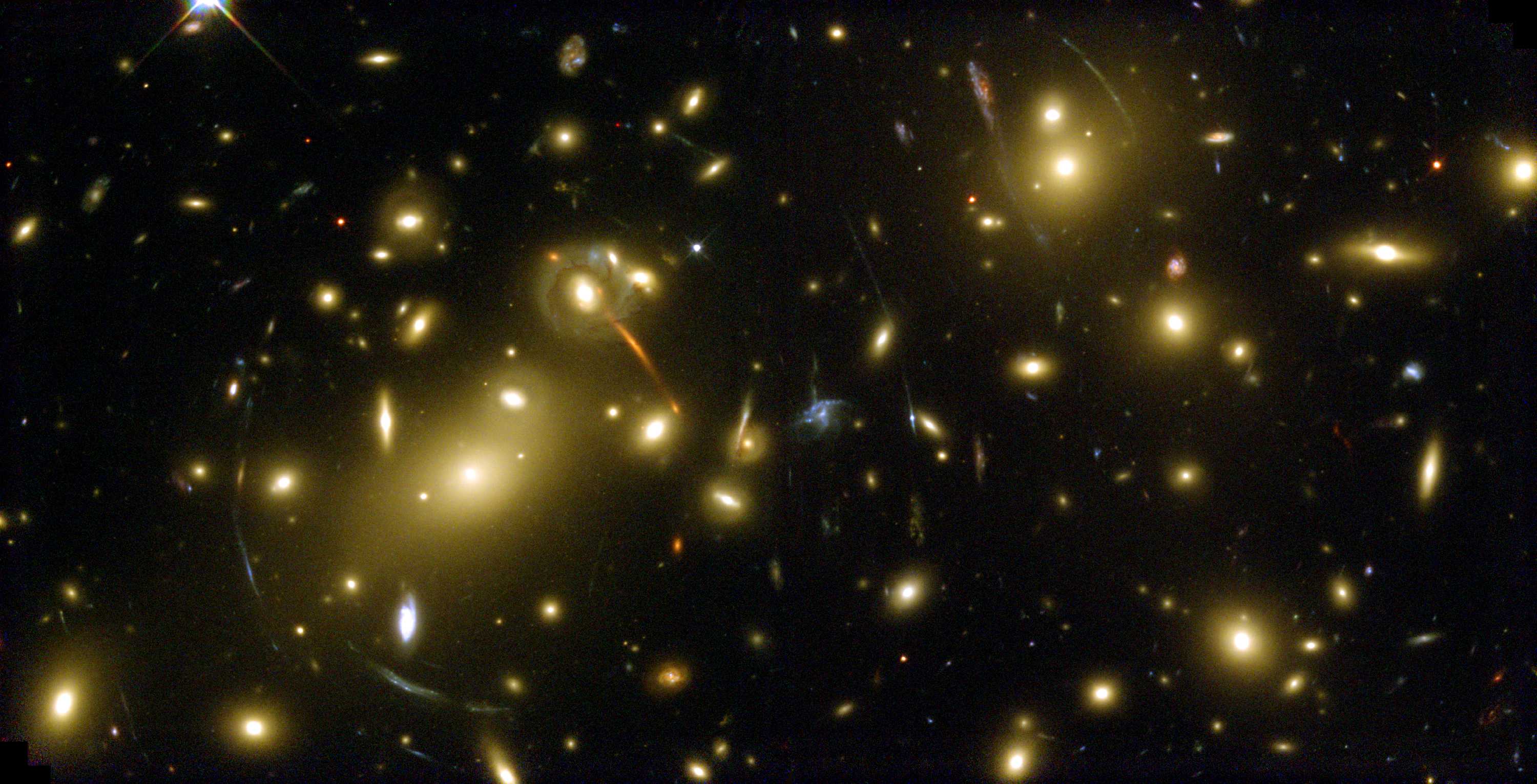Chapter 3
3. The frictions between theoretical science and the observations.
When Isaac Newton sat under a tree, he had the fortune/misfortune an apple fell on his head. He sat in the way of the apple falling to earth. It gave him the “Eureka!” moment. This incident made him write the laws of gravitation. The apple could only have fallen in the direction it did, which is falling on his head.

Image 14. Gravitational lensing as visualized by science. (found on Google)

Image 14a. Gravitational lensing in 3d. In 3d it gets circular.
When we look at a scientific example of “gravitational lensing” what strikes us is that the light isn’t directed to the object with the large mass but surrounds that mass! Without notice 2 objects are added to the image.
When light is influenced by gravity it should be bundled in the direction of the large mass. An example of bundling light is the reflector of a flashlight. This reflector is a mirroring bent surface. When looking into the reflector there aren’t any loose lights. The reflection surface is filled with light.
One could say “A reflector is no lens”. That is not all true. There are reflector telescopes with concave mirrors that function as lenses. There is no need to say who invented these telescopes.

Image 15. The observer doesn’t see multiple objects.
The Hubble-telescope revealed many things in the universe. One of these things was what is called “Gravitational lensing”. These phenomena were discovered in clusters of distant galaxies.

Image 16. Gravitational lensing? (found on Google)
The photograph above shows an image taken by the Hubble telescope. You see between galaxies parts of rings and stretched galaxies. On the basis of these photographs came the explanation shown in image 14. An observation was used to explain a spatial phenomenon that Albert Einstein had written about.
3.2. Singularity should be visible.
Singularity is a concept that has to do with the expansion of the universe assumed by the observed Redshift. Redshift that only could mean the increase of distance. There is a discrepancy in the thought. The observations do not match the theory anymore.
When we look back in time we should see a much smaller universe and back in time means further away. In other words, the smaller surrounds the bigger. This can occur only when the smaller is stretched out and that means enlargement in the observation. This enlargement does not occur when observing through telescopes.
When theory and observations do not match, should the theory be ignored or the observations?
3.3. What happens when time is relative and masses collide.
When time is relative to the speed of a mass, what is the consequence when masses with different speeds collide? Is time-related to the behavior of mass, will different times collide as well? Will this result in a mix of times at the point of collision. When space has no time, why do we experience space? Space should not exist.
Note. When adapting to a theory, the thinking is adapting too. Observations will be influenced. The research will be directed, as do the results.
What when the theory happens to be proven wrong? What will the effect be on astrophysicists who dedicated their life to physics? Will they be happy with the new knowledge or just frustrated? What about schools, universities, students, books, and publications?
